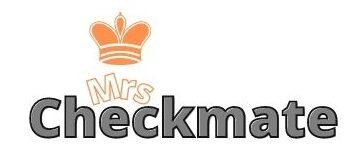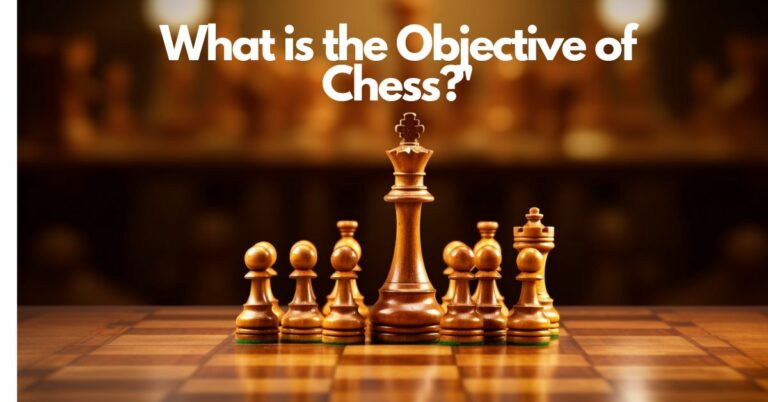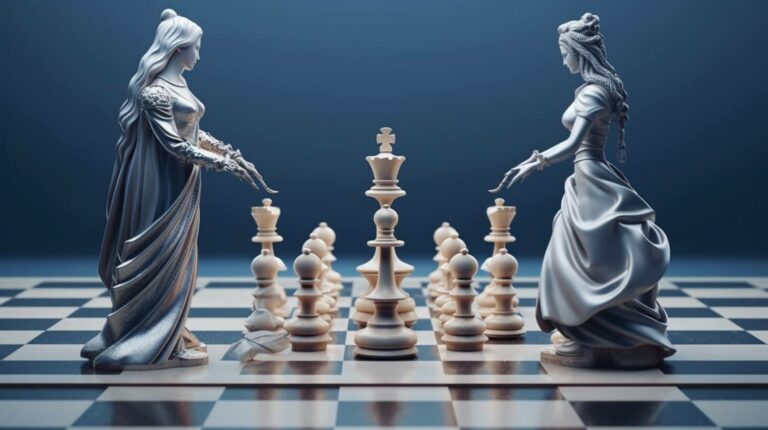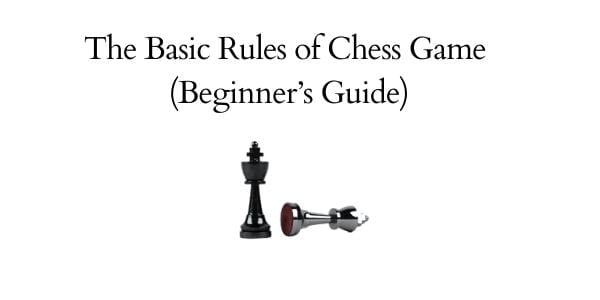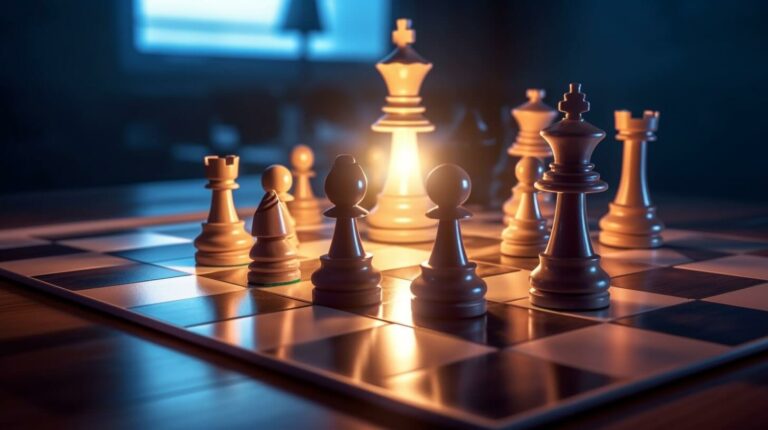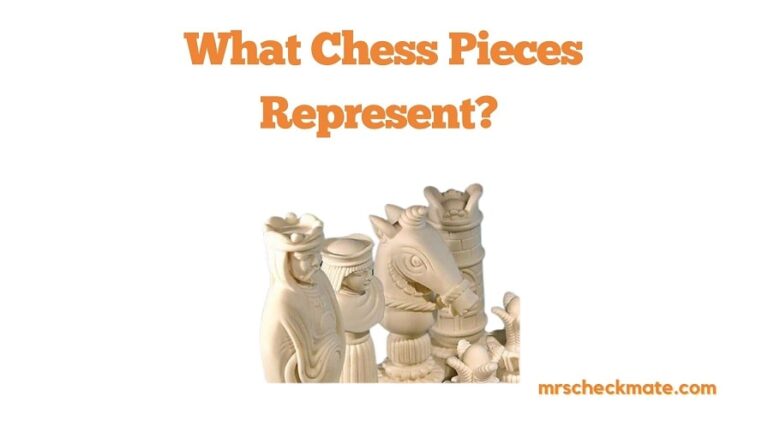Mastering Chess Time: A Guide to Using Analog Clocks
In the high-stakes world of competitive chess, every second counts. The ticking of the clock isn’t just a measure of time; it’s the rhythm of thought, the pulse of strategy, the heartbeat of a battle waged on 64 squares. The analog chess clock, a dual-faced timekeeper, is more than a mere accessory.
It’s an integral part of the game that adds a thrilling dimension of time pressure to the cerebral contest.
Understanding how to use an analog chess clock is crucial for any aspiring chess player. It’s not just about starting and stopping the clock. It’s about managing your time effectively, understanding the rules of timed play, and even using the clock to your advantage.
In this article, we’ll delve into the art of using an analog chess clock, helping you turn every tick to your advantage. Whether you’re a novice player or an experienced one looking to refine your skills, this guide is your companion in mastering the tick-tock tactics of chess.
So, ready to clock your moves and checkmate the time? Let’s dive in!
History of the Chess Clock
Brief History of the Chess Clock
The chess clock, a unique two-faced timepiece, has been an integral part of competitive chess since the 19th century. It was introduced to prevent games from dragging on indefinitely due to players taking too long to make their moves. The first chess clocks were simple sand timers, similar to an hourglass. Each player had a separate hourglass, and they would flip their own over once they had made their move, starting the opponent’s time.
The transition from sand clocks to mechanical ones was a significant leap in the history of chess. The mechanical chess clock, invented by Thomas Wilson in 1883, consisted of two adjacent clocks and a button for each player to press after completing their move, pausing their clock, and starting the opponents. This invention revolutionized chess by ensuring that the players shared the total time equally, adding a new strategic layer to the game.
The Transition from Sand Clocks to Mechanical, and Then to Digital Clocks
The mechanical clock was the standard for a long time until the advent of digital technology. Digital chess clocks, introduced in the late 20th century, offered more precision and additional features compared to their mechanical counterparts. They could be programmed for different time controls and increments, adding even more depth to the strategic aspect of chess.
Despite the convenience of digital clocks, analog chess clocks are still widely used in tournaments and casual games. They provide a sense of nostalgia and tradition, and some players prefer the tactile feedback of pressing the button on a mechanical clock.
For more on the evolution of chess and its equipment, you can check out our article on the history of chess.
| Type of Clock | Advantages | Disadvantages |
|---|---|---|
| Sand Clocks | Simple to use | Not very accurate; no additional features |
| Mechanical Clocks | More accurate than sand clocks; tactile feedback | Can’t be programmed for different time controls |
| Digital Clocks | Most accurate; can be programmed for different time controls | Some players find them less satisfying to use |
For a more detailed look at different types of chess clocks, you might want to read our reviews of the best chess clocks.
While the type of clock used can vary, the importance of time management in chess remains constant. Whether you’re a beginner learning the basic rules of chess or an experienced player looking to gain an advantage in chess, understanding how to use the chess clock effectively is a crucial skill.
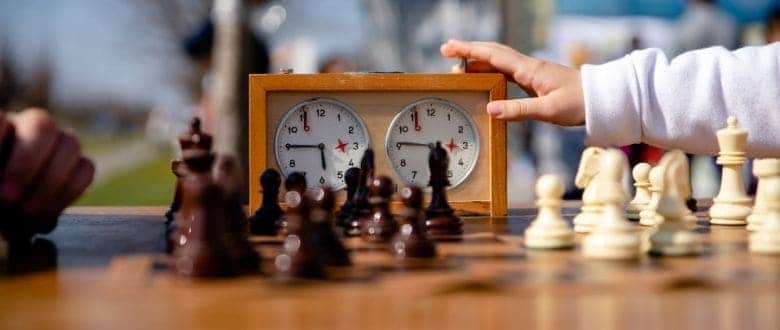
Understanding the Analog Chess Clock
Description of the Analog Chess Clock and Its Components
The analog chess clock is a classic piece of equipment that has been used in chess games for decades. It’s a dual-timer device designed to keep track of the time each player takes for their moves. Each clock has a circular face with a numbered dial and long and short hands, similar to a regular wall clock. However, unlike a regular clock, the two clocks on a chess clock never operate simultaneously. They are controlled by mechanical buttons, known as play buttons, which are pressed by the players to pause their clock and activate their opponent’s clock.
Analog chess clocks also feature a small red flag on the clock face. This flag rises as the time on the clock elapses, reaching its peak as the minute hand of the clock approaches the 12 position. When a player’s time expires, the flag falls, indicating that the player has lost the game due to time.
How the Clock Works
The operation of an analog chess clock is straightforward. After each move, a player presses the play button on the side of the clock. This action stops their clock and starts the opponent’s clock. This way, the clock accurately measures the time each player takes for their moves.
For a thirty-minute game of chess, the knob for setting the time is set to the “5:30” position on both clocks. The game is completed when a clock hits the “6:00” position. The “6:00” position is favored for games because it is easily recognized by both players and adjudicators.
The use of the chess clock adds an extra layer of strategy to the game. Players must not only plan their moves but also manage their time effectively. Failing to press the play button after a move can result in a player losing valuable time. This is why experienced players are exceptionally fast with the play button.
In the world of chess, managing your time with an analog chess clock is a skill in itself. It’s not just about making the best move, but also about making it within the allocated time. This adds a thrilling dimension to the game, making it not just a test of strategic skill, but also of time management and pressure handling.
For a deeper dive into the history of chess, you can visit the history of chess and its evolution.
Read Wikipedia’s page on Chess Clocks for a comprehensive overview of the subject.
Setting Up the Analog Chess Clock
Step-by-step guide on how to set up the clock for a game
Setting up an analog chess clock is a straightforward process that can be accomplished in a few simple steps:
- Ensure the clock is wound up: Analog chess clocks operate on mechanical principles and need to be wound up to function. This is usually done by turning a knob or key on the back of the clock.
- Set the time: Each player’s clock face has a set of hands that can be moved to set the time. The minute hand is usually set to the desired time, while the hour hand will move accordingly. For example, if you’re playing a 90-minute game, you would set the minute hand to 1:30.
- Start the clock: Once the time is set, you can start the clock by pressing the button on top of the clock on your side. This will start your timer and stop your opponent’s.
Remember, the clock should be placed on the left side of the player who has the black pieces. This is a standard rule in chess tournaments.
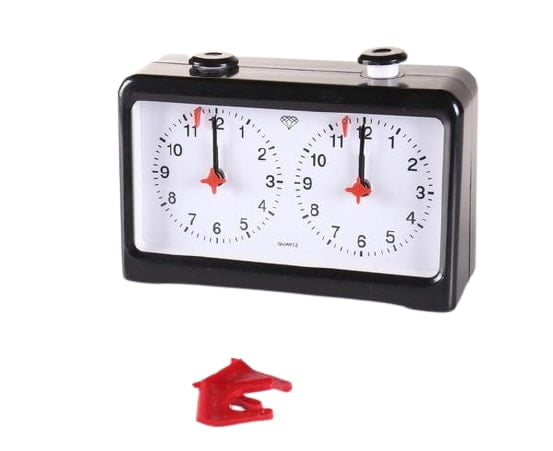
Different time controls and how to set them
In chess, the term “time control” refers to the amount of time each player has to make their moves. There are several types of time controls in chess, and each one requires a different setup on the analog clock:
- Standard Time Control: This is the most common time control in chess. Each player has the same amount of time to make all their moves. For example, each player could have 90 minutes to make all their moves.
- Increment Time Control: In this type of time control, a certain amount of time is added after each move. This is more common in digital clocks but can be approximated in analog clocks by manually adding time after each move.
- Delay Time Control: This is similar to increment time control, but the added time is only used if a player uses their entire base time. Again, this is more common in digital clocks.
- Blitz and Bullet: These are fast-paced games where each player has very little time, often 5 minutes or less for the entire game. The clock is set to the appropriate time at the start of the game.
To set these different time controls on an analog clock, you would adjust the minute and hour hands accordingly at the start of the game. For increment and delay time controls, you would need to manually adjust the clock after each move.
Remember, understanding how to use the clock is just as important as understanding the game itself. In fact, many games are won or lost based on time management. So, take the time to familiarize yourself with your clock and how to set it up properly.
If you’re a beginner looking to improve your game, you might find this article on chess tips for beginners helpful. It includes tips on time management and how to effectively use the clock.
Remember, practice makes perfect. The more you play and the more familiar you become with your clock, the better you’ll be at managing your time during games. Good luck!
Using the Analog Chess Clock During a Game
Rules for Using the Clock During a Game
When it comes to using an analog chess clock during a game, there are a few key rules to keep in mind:
- Start of the game: The player with the white pieces always starts the game, and therefore, their clock is the first to start ticking.
- Making a move: After making a move, you should hit your side of the clock. This action stops your clock and starts your opponent’s clock.
- End of the game: The game ends when one player’s time runs out, they are checkmated, or a draw is agreed upon. If a player’s time runs out, they lose the game, unless their opponent doesn’t have enough material to checkmate, in which case the game is a draw.
- Pausing the game: If a game needs to be paused, for example, to call an arbiter, the clocks should be stopped.
Remember, these rules can vary slightly depending on the specific rules of the tournament you’re playing in. Always make sure to familiarize yourself with the rules before you start playing.
Common Mistakes to Avoid
Even experienced players can make mistakes when using an analog chess clock. Here are a few common ones to avoid:
- Forgetting to press the clock: After making a move, some players forget to press their clock. This mistake can cost valuable time.
- Pressing the wrong side of the clock: In the heat of the game, some players accidentally press their opponent’s side of the clock. This action can cause confusion and disrupt the flow of the game.
- Not managing time effectively: Some players spend too much time on early moves and end up in time trouble later in the game. It’s important to manage your time effectively and keep an eye on the clock.
- Not knowing how to set the clock: Some players are not familiar with how to set the time controls on an analog clock. It’s important to learn this skill to ensure the clock is set correctly for your games.
Remember, practice makes perfect. The more you use an analog chess clock, the more comfortable you’ll become with it. And don’t forget, while the clock is an important part of the game, it’s still all about the moves you make on the chessboard. For tips on improving your chess game, check out our article on chess tips for beginners.
For more information on the rules of using a chess clock, you can refer to the official FIDE Laws of Chess.
The transition from Analog to Digital Clocks
Comparison of Analog and Digital Clocks
The evolution of chess clocks from analog to digital has been a significant development in the world of chess. Both types of clocks have their unique features and uses, and understanding these can help you make the best choice for your games.
Analog Clocks:
- Visual Appeal: Analog clocks have a classic, timeless look that many players appreciate. They add a touch of elegance to the game and are often preferred for their aesthetic appeal.
- Simplicity: Analog clocks are straightforward to use. There’s no need to worry about programming or setting up different modes. You wind it up, set the hands, and you’re ready to play.
- Durability: These clocks are often robust and built to last. They can withstand the rigors of intense chess matches.
Digital Clocks:
- Precision: Digital clocks offer a high level of accuracy. They count down the seconds, which can be crucial in fast-paced games or tournaments.
- Multiple Time Controls: Digital clocks can handle various time controls, including increment and delay settings. This versatility makes them suitable for a wide range of chess formats.
- Ease of Reading: The digital display is easy to read at a glance, which can be a significant advantage in tense situations.
While analog clocks have their charm and simplicity, digital clocks offer more features and precision. The choice between the two often comes down to personal preference and the specific requirements of the game or tournament. For a deeper understanding of the differences, you can refer to this comprehensive comparison between analog and digital chess clocks.
Pros and Cons of Using an Analog Clock
Using an analog clock in chess has its advantages and disadvantages. It’s essential to understand these to make an informed decision about whether an analog clock is the right choice for your games.
Pros:
- Simplicity: Analog clocks are easy to set up and use. There’s no need to navigate through different modes or settings.
- Durability: These clocks are typically robust and can withstand the intensity of a chess game.
- Aesthetic Appeal: The classic look of an analog clock can add a touch of elegance to your chess games.
Cons:
- Lack of Precision: Analog clocks do not offer the same level of precision as digital clocks. They do not count down the seconds, which can be a disadvantage in fast-paced games.
- Limited Time Controls: Analog clocks do not support different time controls like increments or delays.
In conclusion, while analog clocks may lack some of the features of digital clocks, they are still a viable option for many players. They offer simplicity and durability, and their classic look is appreciated by many chess enthusiasts. However, if you require more advanced features or play in tournaments with various time controls, a digital clock may be a better choice. For more insights on choosing the right chess clock, you can check out this guide on chess clocks.
Choosing the Right Chess Clock
Factors to Consider When Choosing a Chess Clock
When it comes to choosing the right chess clock, there are several factors you need to consider. These include:
- Type of Clock: Decide whether you want an analog or digital clock. Analog clocks are simpler and have a classic feel, but digital clocks offer more features and flexibility.
- Material: Chess clocks can be made from a variety of materials, including wood, metal, and plastic. The choice of material can affect the durability and aesthetic appeal of the clock.
- Size: The size of the clock can be an important factor, especially if you plan to travel with it. A smaller, more compact clock may be more convenient for travel, while a larger clock may be easier to see and use during a game.
- Features: Look for features that will enhance your gaming experience. This could include things like a clear display, easy-to-use buttons, and a variety of preset game modes.
- Price: Finally, consider your budget. While there are some very high-end chess clocks available, there are also plenty of affordable options that offer great value for money.
Recommendations for Good Analog Chess Clocks
If you’re looking for a good analog chess clock, here are a few recommendations:
- DGT North American Chess Clock: This clock is popular for its excellent programming options and clear display. It offers a range of presets and customization options, making it a solid choice for both beginners and experienced players. Read more about it here.
- LEAP Master Tournament Clock: This is a simple and effective analog chess clock. It’s compact, easy to use, and has a large, clear display. It’s an ideal choice for those who prefer a more classic-style chess timer.
- ZMF-II Black Digital Chess Clock: Despite being a digital clock, the ZMF-II offers a classic look with its black exterior. It’s lightweight, durable, and packed with features, including various time controls and up to 3 programmable settings.
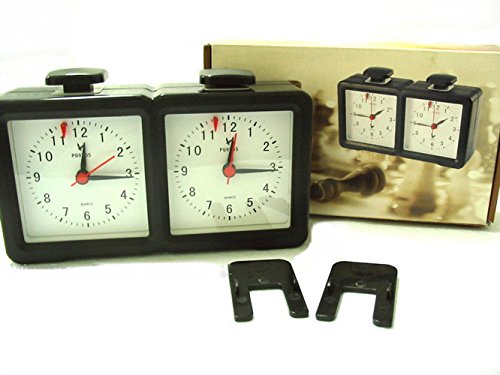
Remember, the best chess clock for you will depend on your specific needs and preferences. Take the time to consider what features are most important to you before making your decision.
Conclusion
Mastering the use of an analog chess clock is a crucial part of your journey in the world of chess. It’s not just about keeping track of time, but also about managing it effectively to gain a strategic advantage over your opponent. From the historic sand clocks to the mechanical wonders we use today, chess clocks have always added an extra layer of complexity and excitement to the game.
Whether you’re a beginner just starting out or an experienced player looking to improve your game, understanding how to use an analog chess clock can make a significant difference. Remember, practice makes perfect. The more you play using a clock, the more comfortable you’ll become with managing your time during a game.
If you’re considering buying a chess clock, remember to consider factors such as the type of clock, material, size, features, and price. There are many great options out there, whether you’re looking for a classic analog clock or a feature-packed digital one. You can check out some of our recommendations to help you make an informed decision.
In the end, chess is a game of strategy, skill, and timing. And the clock, whether analog or digital, is an integral part of that. So, get out there, start the clock, and make your move!
Remember, as we discussed in our article on how to become a Candidate Master, every element of chess, including time management, contributes to your overall performance and ranking. So, understanding and effectively using a chess clock can indeed be a game-changer. Happy gaming!
FAQ
- What is an analog chess clock?
An analog chess clock is a type of clock that has two-time displays, one for each player. It is used in chess and other two-player games to keep track of the time each player spends on their moves. - How does an analog chess clock work?
An analog chess clock works by having two clocks that count down separately. When one player makes a move, they press a button on their side of the clock, which stops their clock and starts the opponent’s clock. - How do I set up an analog chess clock?
To set up an analog chess clock, you first need to wind up the clock using the wind-up key. Then, set the hands to the desired time for each player. The specifics may vary depending on the model of the clock. - What are some common mistakes to avoid when using an analog chess clock?
Some common mistakes include forgetting to press the button after making a move, accidentally knocking over the clock, and not setting the clock correctly at the start of the game. - What are the advantages of using an analog chess clock over a digital one?
Analog chess clocks are often appreciated for their classic, traditional look and feel. They are also typically more durable and do not require batteries or electricity to operate. - What should I consider when choosing a chess clock?
When choosing a chess clock, consider factors such as the type of clock (analog or digital), the material it’s made of, its size, the features it offers, and its price. - Where can I buy a good analog chess clock?
You can buy analog chess clocks from various online and physical stores. Check out our recommendations for some of the best chess clocks available in the market.
